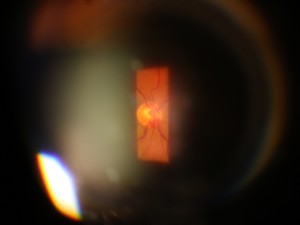Ever had a dilated eye exam?
Ever wondered why a dilated eye exam was necessary? Eye exams provide important information to optometrists and ophthalmologists about the health of your eye. These procedures can be conducted in a variety of ways, depending on what your eye health practitioner is looking for. One method is the dilated eye exams. These are especially important for those who are experiencing vision problems, pain or are at risk of eye disease. So what does dilation do? Let us explain.
Why Dilate the Eye?
Dilation of the pupil is a method used by eye health practitioners when a more comprehensive examination of the eye is required. Put simply, a dilated eye exam is where drops are put into the eye to enlarge the pupil. This in turn offers a better view of the structures deeper in the eye. This method helps the eye specialist to better assess the status and health of the optic nerve, macula and retina. Furthermore, it is used to detect and treat damaging eye conditions.
In most cases, a limited view of the optic nerve and macula is possible through a normal size pupil. However, dilating the pupil allows the optometrist or ophthalmologist to see these structures in more detail and offers a much wider view of the peripheral retina. During this type of exam, each eye can be closely inspected for signs of vision problems and eye disease.
Many common eye diseases and conditions can be more accurately diagnosed, often in early stages, through a dilated eye exam. They include:
- Macular degeneration
- Cataracts
- Retinal detachment or retinal tears
- Glaucoma
- Diabetic eye disease
How Does Dilation Work?
The process is simple and uses specific types of eye drop medication. The drops work by either stimulating contraction of the muscles that enlarge the pupil or by relaxing the muscles that make the pupil constrict. This ensures your pupils will stay large even when a large light is shining right into them!
Once the drops have been administered, it usually takes 10-15 minutes for the pupils to fully dilate, varying slightly for each person depending on their individual reaction. Typically, the drops wear off within 4-6 hours, however, some can last up to 24 hours.
Are there any Side Effects of a Dilated Eye Exam?
Once eyes have been dilated, they will become more sensitive to light. This sensitivity is a result of the pupil becoming enlarged and allowing more light to enter. To reduce your discomfort, we recommend you bring a pair of sunglasses to wear after your exam.
Additionally, it is more difficult to focus in close (for example, reading) for a few hours after a dilated eye exam, as the eye drops temporarily affect the muscles in the eye. Again, this is short-term and should resolve within a few hours.
Driving is not recommended for a number of hours after a dilated eye exam because eye dilation makes your vision blurry and your eyes more light-sensitive. Instead, it is advisable to bring a friend or family member to the appointment or catch a taxi or public transport to get home.
Who should have a Dilated Eye Exam?
A dilated eye exam will be recommended for many reasons. For example, if you’re over the age of 60, an annual dilated eye exam is critical for early detection of eye disease and for maintaining eye health. Similarly, if you have an eye-related disease like glaucoma or diabetes, this type of exam should be undertaken at least once a year to monitor for possible progression.
Have you had a dilated eye exam lately? For more information on dilated eye exams, contact KindSIGHT on 07 3063 1600.

Retinal photo with a dilated eye (pupil)

Star shaped cataract as seen through dilated eye (pupil).

Slit lamp photo of an optic nerve (undilated).


